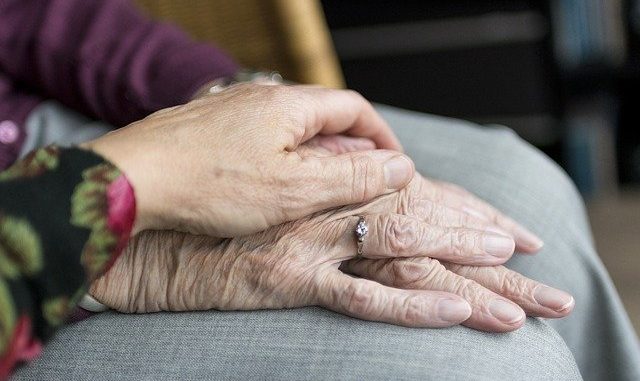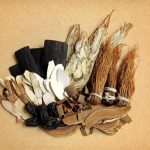
Hoan-Ngoc is a traditional plant medicine found in South-East Asia. Pseuderanthemum palatiferum (Nees) Radlk is a Vietnamese plant in the Acanthaceae family. The plant is also used in Thai based traditional medicines.
The reputed traditional uses are for treating arthritis, trauma, piles and hemorrhoids, stomach ache, high blood pressure or hypertension, kidney disease including nephritis, various cancers, diarrhea and colitis. The leaves are used to treat animal disease too such as diarrhea in dogs and pigs, and cholera in ducks and chickens (Dieu et al., 2005).
The Plant: Hoan-Ngoc
It is a 1 to 2 metre high shrub.
Names
Its vernacular names are xuan-hoa or hoan-ngoc in Vietnam and phaya wanon in Thailand
The protein content is 30.6% of the total dry matter. The main amino acids are lysine, methionine and threonine which make up 30.6%, 20.7%, and 61.0% mg/100 g fresh leaf, respectively (Dieu et al., 2005).
The leaves contain β‐sitosterol, stigmasterol, kaempferol 3‐methyl ether 7‐O‐β‐glucosides, apigenin 7‐O‐β‐glucoside, lipids, and saponin (Phan et al., 2003).
Hoan-Ngoc and Alzheimer’s Disease
Alzheimer’s disease is the leading cause of dementia in the elderly.
Acetylcholine (ACh) is a key neurotransmitter in the brain’s chemical messenger system. It is especially important for creating memory. Acetylcholinesterase (AChE) is an enzyme which hydrolyzes acetylcholine in the central and peripheral cholinergic synapses on the brain. The products are choline and acetic acid.
When ACh is no longer produced, people with Alzheimer’s disease are unable to remember anything. AChE inhibitor drugs have been designed to inhibit the breakdown of ACh in the brain. This helps increase cholinergic neurotransmitter activity in AD patients. Drugs to inhibit AChE are increasingly expensive to produce but there are possibilities to use plant based drugs.
A rat study shows that a water extract from the leaf could reduce AChE activity which may suggest some pharmacological benefit in this regard (Buncharoen et al., 2010).
Hoan-Ngoc & Blood Pressure
Water extracts of the leaf have been shown in an animal study to help in the reduction of blood pressure (Khonsung et al., 2011). Further investigation using macrophages show activity in modulating various anti-inflammatory factors.
Inflammation
Ethanol extracts of Hoan-Ngoc appear to suppress acute inflammation using the ear oedema test (Khumpook et al., 2013).
Diabetes
Hoan-Ngoc leaf extract is a treatment for diabetes. Some studies indicates its effectiveness in treating diabetic rats (Padee et al., 2010; Nualkaew et al., 2015). The leaf extracts are usually obtained with various organic solvents including chloroform, methanol and ethanol. These extracts also have high antioxidant activity (Chayarop et al., 2011).
References
, , & (2010). Acetylcholinesterase inhibitory effect of Pseuderanthemum palatiferum in albino rats. Trends Research in Science and Technology, 2(1), pp. 13–18. (Article)
, , , , , , & (2011). Antidiabetic effects and in vitro antioxidant activity of Pseuderanthemum palatiferum (Nees) Radlk. ex Lindau leaf aqueous extract. Journal of Pharmaceutical Sciences, 38, pp. 13–22. (Article)
Dieu, H.K., Loc, C.B., Yamasaki, S., et al. (2005) The ethnobotanical and botanical study on Pseuderanthemum palatiferum as a new medicinal plant in the Mekong delta of Vietnam. Jpn Agr Res Q. 39(3) pp. 191-6
Giang, P.M., Bao, H.V., Son, P.T. (2003) Phytochemical study on Pseuderanthemum palatiferum (Nees) Radlk., Acanthaceae. Vietnam Journal of Chemistry. 41 (2) pp. 115-8
Ho, T. C., & Chun, B. S. (2019). Extraction of Bioactive Compounds from Pseuderanthemum palatiferum (Nees) Radlk. Using Subcritical Water and Conventional Solvents: A Comparison Study. Journal of Food Science (Article).
, , , & (2011). Hypotensive effect of the water extract of the leaves of Pseuderanthemum palatiferum. Journal of Natural Medicines, 65(3–4), pp. 551
, , , , & (2013). Anti‐inflammatory activity of ethanol extract from the leaves of Pseuderanthemum palatiferum (Nees) Radlk. Chiang Mai Journal of Science, 40(3), pp. 321–331.
, & (2013). Antimicrobial activity of some Vietnamese medicinal plants extracts. Journal of Medicinal Plants Research, 4(35), pp. 2597–2605.
, , & (2015). Hypoglycemic activity in diabetic rats of stigmasterol and sitosterol‐3‐O–D‐glucopyranoside isolated from Pseuderanthemum palatiferum (Nees) Radlk. leaf extract. Journal of Medicinal Plants Research, 9(20), 629–635.
Padee P, Nualkeaw S, Talubmook C, et al. (2010) Hypoglycemic effect of a leaf extract of Pseuderanthemum palatiferum (Nees) Radlk. in normal and streptozotocin induced diabetic rats. J. Ethnopharmacol. 132 pp. 491-6 (Article)
, , & (2003). Phytochemical study on Pseuderanthemum palatiferum (nees) radlk., Acanthaceae. Journal of Chemistry, 41(2), pp. 115–118.
Sittisart, P., Chitsomboon, B., & Kaminski, N. E. (2016). Pseuderanthemum palatiferum leaf extract inhibits the proinflammatory cytokines, TNF-α and IL-6 expression in LPS-activated macrophages. Food and Chemical Toxicology, 97, pp. 11-22 (Article).


Leave a Reply